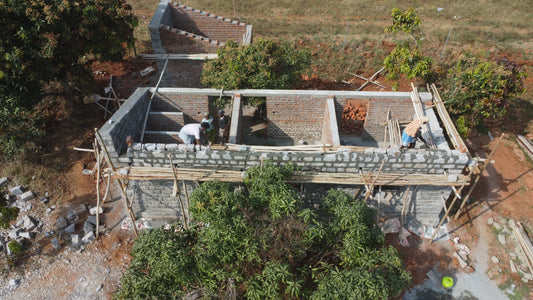Isn’t God just a toxic narcissist ? , wonders Philomena Cunk, an investigative reporter, albeit, fictional. The observation which is at once drolly amusing and incendiary is premised on God being a stickler for rules with a supposedly Orwellian omnipresence. I do not know if Cunk was being consciously gender neutral in her contemplations of God, but she would be forced to change her mind if she met Bhagavathy, as imagined and brought to life by Divya Nayar.



Bhagavathy might be a goddess, but she is also a woman and a mother. Would she then be as trigger happy as the male gods in smiting and meting our divine justice? Or would she be in thrall to her feminine maternal urges? The internal conflict of a vengeful goddess who is also a mother was brilliantly brought to life by Divya Nayar in the third act of her one woman dance drama. The moment when the demon Daruka upon encountering the goddess in her full glory and wraths falls to her feet in utter supplication able to utter nothing but the plea “Amme!”, and the enormous internal struggle between the ugra and shanthaswaroopams of the goddess all brought to life by the brilliant abhinaya of Divya Nayar was a delight to watch.The choice of costume and props, more redolent of Koodiyattam, greatly aided in transporting the audience to the presence of Kodungallur Bhagavathy. The awe inspiring music, with the right combination of percussion, violin and vocals, was pitch perfect.



In the first act, we are introduced to Bhagavathy, the initially fearsome and somewhat disconcerting goddess, and slowly made familiar with her wholesome maternal aspects. This is done through a deeply personal journey which the dancer herself experienced – the tales heard at her grandmother’s knee, the hesitant explorations of the kavu behind the tharavad which is the abode of Bhagavathy, and identification of the feminine in the performer with the scared omnipotent omnipresent feminine.

Through a brief foray into the process of assimilation and appropriation of a fierce mother goddess as the Kodungallur Bhagavathy, Divya Nayar also highlighted the process of exclusion inherent in organised religion, and the origins of the KaavuTheendal, a ritual unique to the Kodungallur deity. The almost meditative pace of the first and second acts was in vivid contrast to the crescendo of the spine chilling Daruka vadham in the third act.

Maternal instincts were once again the highlight of the fourth and final act, when a wrathful Bhagavathy still in a haze of sanguinary rage is calmed at the sight of her children – Ganapathy and Murugan. That Divya Nayar ably portrayed the great contrasts in emotions and completely immersed the audience as well in the mood swings of the goddess, is a telling credit to her craft, and to the craft of the musicians accompanying her.
Much gratitude is due to Aditya Balasundaram for making this happen, and to Sumanth at Sriram Memorial Art Foundation who provided the wonderful space that is the courtyard of The Palimpsest house. Hopefully, this collaboration will continue to offer more such gems.


Perhaps, it was apposite that the first offering of this collaboration should be at Madurai and should be about the Kodungallur Bhagavathy, for she is also considered to the Goddess in whom Kannagi ultimately finds peace and salvation.

Words : Raguvaran Gopalan
Photos : Srinaath J Hari




